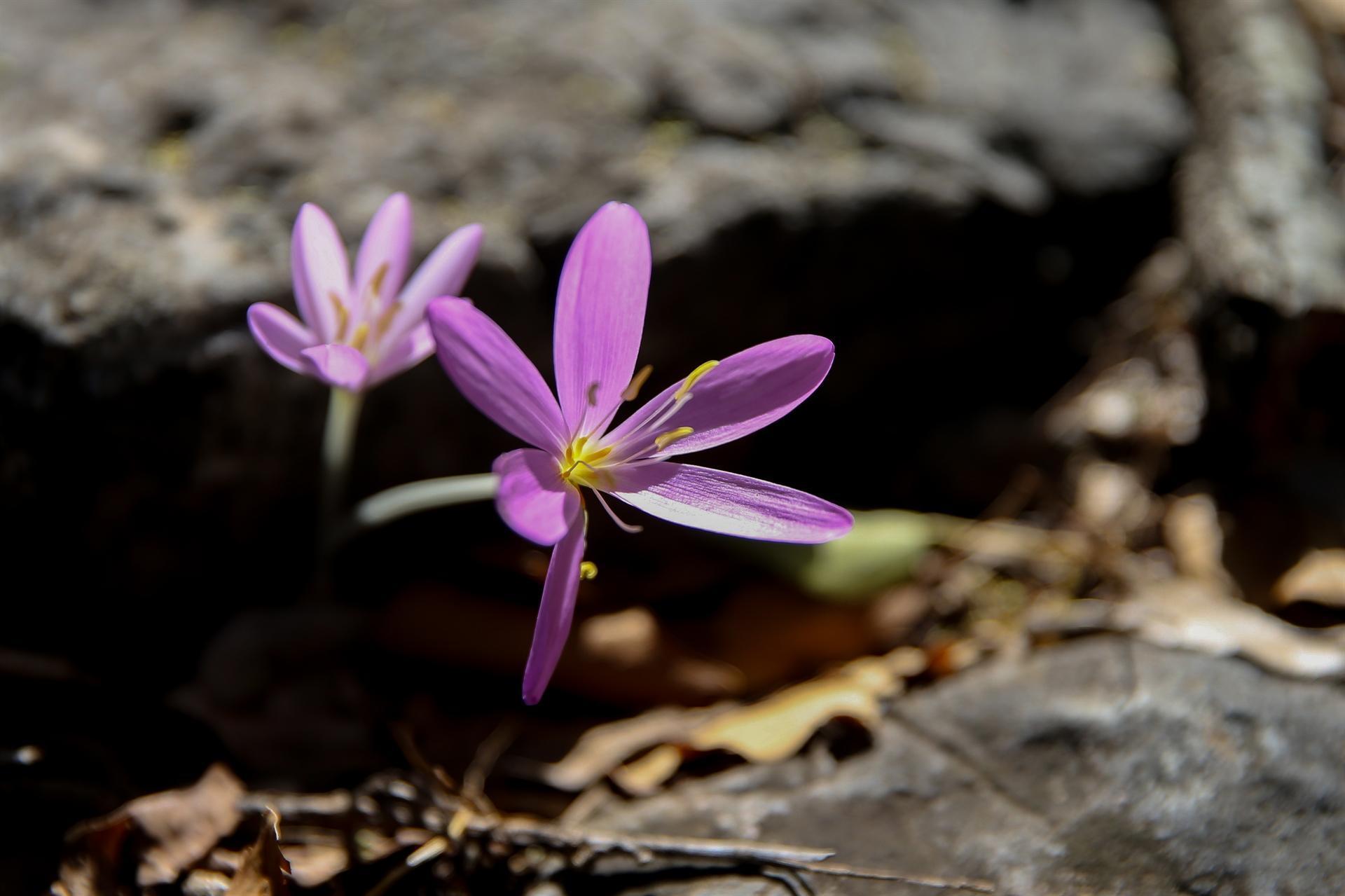
The “Termessos crocus,” once carved on sarcophagi in ancient times, which grows in the ancient city of Termessos in the southern province of Antalya, is under protective care to save the flowers from extinction thanks to the efforts of scientists.
Termessos, which glorifies the pages of its history as the city that “Alexander the Great could not conquer,” has a completely different appearance with crocuses blooming in the autumn season that attracts the attention of tourists visiting the ancient city.
A team of nine people, headed by the president of the Antalya Orchids and Biodiversity Conservation Association (ANTOK), Akdeniz University’s Associate Professor İsmail Gökhan Deniz, has been working to preserve “colchicum baytopiorum,” which is known as “Termessos crocus.”
The team has been working within the scope of a project called “Ancient Cities from Apollo to Athena, Endemic Flowers,” which is backed by the Europen Union funds and is being carried out under the Civil Society Dialogue. It aims to examine the local endemic plant species, which grows only in five ancient cities of Turkey in the world.
Symbolic to Termessos, the plant is often described as the ornament of autumn with its violet and bluish color tones. Promotional videos explaining the importance of the plant species, brochures and posters have been prepared in four languages, and signboards have been placed on the entrance of the ancient city.
Scientists have been working to protect the ancient plants, bring them into a sustainable economy and keep them alive for future generations. They determine the location of each plant using GPS devices to avoid any damage that they can receive during excavations or rearrangements carried out in the ancient city.
Speaking to the state-run Anadolu Agency, Deniz said that the bitter vetch of Phaselis, the alkanna macrosiphon of Perge, the broomrape of Side, the orchid of Aspendos and the crocus of Termessos will be taken under protection.
Stating that these plant species are under the threat of extinction in the near future, Deniz drew attention to the high flora and endemic diversity of the Termessos National Park.

Noting that Termessos crocus was introduced to the world of science in 1976, Deniz said: “We aim to increase the awareness of our people to protect the plant species and keep it for future generations. We have an exhibition about mythological stories and plant species in our ancient cities in the Antalya Museum. We are also planning to open an exhibition in Athens.”
Deniz stated that they will provide information about the archaeological values and endemic flowers of the regions to those who visit ancient cities, and they will also implement a garden application named “Virtual Garden.”
Pointing out that the people in ancient times carved their love for nature on rocks and artifacts, Deniz said they wanted to match the ancient plant species with the flora of today.
Stating that the Termessos crocus differs from its close relatives in terms of its shape during the blooming period, Deniz said there are 700 plant species in Termessos National Park and the most important of these were the Termessos crocus.
“This crocus is only found in the ancient city of Termessos and its immediate surroundings,” Deniz said.
Noting that detailed research on risk factors should be carried out urgently as it especially attracts the attention of tourists, Deniz said: “Termessos crocus is very unique and only exists here in the world. We see the visitors plucking this flower and putting it on their ears. We warn them not to do it. This ancient city is a protected area. It is forbidden to pick or pluck plants.”